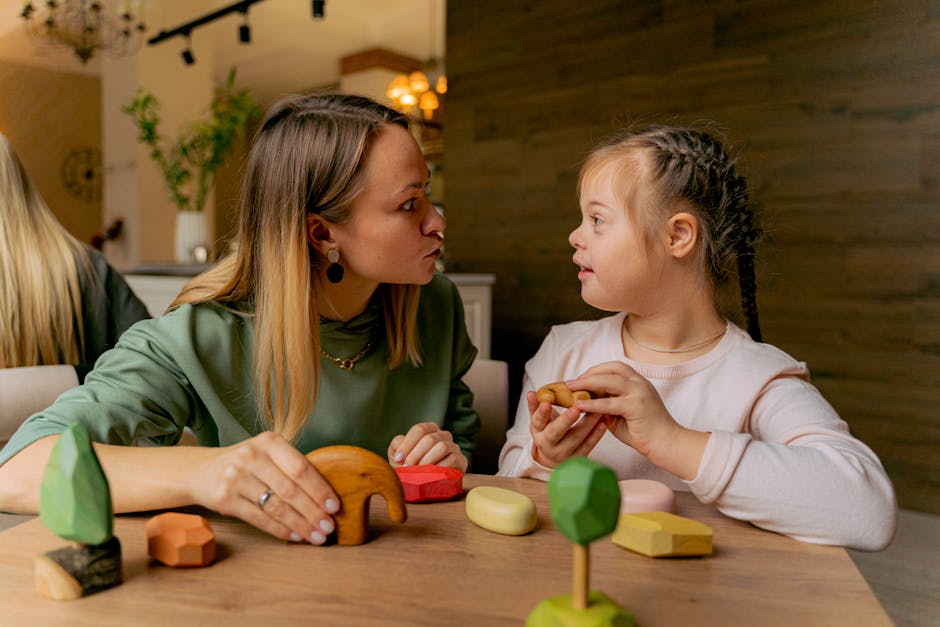Uncharted Learning: Use Biofeedback Tech to Elevate Online Courses
In an age where emotional intelligence intersects with educational technology, we are tasked with a pivotal challenge: enhancing the emotional regulation and resilience of students in online learning environments. As educators and course designers, we explore innovative solutions that not only cater to the intellectual needs of learners but also nurture their emotional well-being. One such promising approach is the incorporation of biofeedback technology in online course design. By leveraging biofeedback, we can create immersive educational experiences that help learners manage their emotions better, thereby cultivating resilience and engagement.
The Current Landscape of Online Learning

At the forefront of modern education lies online learning, a realm that has swiftly transitioned from an alternative learning method to a standard practice for institutions around the globe. According to the Online Learning Consortium, the growth of online education has accelerated dramatically, attributed in part to the global pandemic and rapid technological advances. As we adapt to this digital-first world, we must also recognize the evolving needs of students, particularly concerning their emotional health.
With the rise of platforms offering massive open online courses (MOOCs) and specialized learning modules, students now carry a dual burden: mastering new content while simultaneously managing stress and anxiety, especially in a virtual setting. It begs the question: how can we support students not just academically but emotionally?
Enter Biofeedback Technology: What Is It?

Biofeedback technology involves using electronic monitoring devices to convey information about physiological functions, helping individuals gain control over their bodily processes and emotional states. In the context of education, biofeedback instruments—such as heart rate monitors, breathing devices, and even brainwave feedback tools—can provide students with real-time data regarding their emotional states, enabling them to practice self-regulation techniques.
Biofeedback promotes awareness of one’s physiological and emotional states, equipping learners with the tools they need to manage stress effectively. The connection is profound: as students become more aware of their emotional responses, they improve resilience, which is essential in today’s fast-paced learning environments.
Integrating Biofeedback into Online Course Design

1. Personalized Learning Journeys

When designing online courses, personalization is key. Each learner is unique, with different emotional triggers and stressors. By integrating biofeedback technology, course designers can create adaptive learning paths tailored to students’ emotional needs. For instance, if a student’s biofeedback indicates high levels of stress during a particular module, the course can offer calming exercises or content designed to reduce anxiety. This dynamic adjustment can foster resilience, encouraging students not just to persevere but to thrive amid challenges.
2. Enhancing Engagement Through Interactive Experiences

Biofeedback can transform passive learning into an active, interactive experience. Imagine a group of students collaborating in a virtual classroom, each wearing a biofeedback device that tracks their emotional engagement. An instructor can use this data to gauge class mood and adapt lessons dynamically—whether introducing a gamified element to boost excitement or facilitating a mindfulness session when stress levels peak.
Moreover, embedding these real-time adjustments can enhance the engagement level significantly. Think of the possibilities: few learning environments have explored the potential of intertwining emotional feedback with curriculum delivery, creating a truly responsive educational experience.
3. Fostering Emotional Intelligence Skills

Emotional intelligence (EI) has emerged as a crucial skill in both personal and professional realms. Biofeedback technology lends itself beautifully to the cultivation of EI in students. By regularly receiving data about their physiological responses to various stimuli—whether a challenging assignment or a high-stakes presentation—students can learn how to evaluate and adjust their emotional reactions effectively.
Incorporating modules that explicitly train students on emotional awareness, regulation, and resilience, alongside biofeedback insights, sets a strong foundation for developing these vital skills. Courses that merge academic knowledge with emotional training offer learners a comprehensive arsenal that prepares them for challenges beyond the classroom setting.
4. Creating a Supportive Learning Environment

With the potential to enhance emotional regulation, biofeedback technology can promote a culture of mindfulness and awareness among online learners. Educators can implement stress-reduction techniques throughout the course, such as guided meditation, breathing exercises, or reflective journaling, all of which can be calibrated based on biofeedback data.
This holistic approach helps create a nurturing environment where students feel safe to express their emotional needs, leading to greater retention and a sense of belonging—a crucial element for success in the online learning landscape. As reiterated in a blog post on sleep-based learning, understanding individual needs advances educational outcomes exponentially.
Real-World Applications: Success Stories and Research

The advancements in biofeedback technology have prompted several institutions to pilot innovative programs that integrate these tools. For instance, Stanford University conducted a study where students wore biofeedback devices during coursework. The results showed not only a noticeable decrease in anxiety levels but also a marked improvement in student motivation and overall performance.
Furthermore, organizations like HeartMath have developed specialized programs tailored for educators that incorporate biofeedback into classroom settings. Utilizing these systems, participants reported feeling more focused, grounded, and resilient, all while experiencing increased empathy for peers—an invaluable attribute in collaborative environments.
To further explore the intersection of technology and education, you may find insights in the AI transformation of education, which discusses how intelligent systems will foster adaptive learning experiences.
5. Aligning Biofeedback with Educational Standards

For biofeedback technology to become entrenched within the broader educational framework, aligning its application with established educational standards is crucial. This integration presents unique challenges; educators must ensure that biofeedback tools meet not only the learning objectives of specific courses but that they also align with emotional and social development benchmarks.
Curriculum developers can enhance traditional educational practices by embedding biofeedback methodologies into existing frameworks. This natural fusion would substantiate the value of emotional regulation in promoting academic success, as explored in another enlightening resource on emotional intelligence in online learning.
6. Breaking Barriers through Collaborative Learning

Collaborative online learning environments provide students with opportunities to engage with peers meaningfully, yet they can also activate emotional responses tied to group dynamics, competition, and social interactions. Biofeedback technology can illuminate these interactions, offering insights into how collective emotional states impact engagement and cohesion.
Imagine students engaging in project-based learning while receiving feedback on their emotional responses to peers' contributions. Insights gained through these interactions can guide groups towards healthier dialogue, foster mutual support, and ultimately enhance group dynamics. This method aligns with recent research emphasizing collaboration and emotional sensitivity as cornerstones for successful online educational environments.
Next Steps: Integrating Biofeedback Technology in Education

As biofeedback technology continues to evolve, educators and designers must seize this opportunity to refine the online learning experience actively. Below are practical steps to achieve integration:
-
Research and Development: Familiarize yourself with the latest biofeedback tools. Research cutting-edge technology and align it with your learning objectives. Institutions like Harvard Business Review provide extensive resources on prioritizing emotional wellness in educational settings.
-
Pilot Programs: Start small by implementing biofeedback solutions in specific courses or programs. Gather qualitative and quantitative data to evaluate student responses and ascertain potential scalability.
-
Collaborative Workshops: Engage with fellow educators, psychologists, and technologists to conduct workshops that discuss best practices for incorporating biofeedback into online courses. Ideas can flow freely, benefitting all involved.
-
Continuous Feedback Loop: Involve students in the feedback process. Utilize their insights to refine the implementation of biofeedback, promoting a sense of ownership in the learning experience.
-
Professional Development: Invest in professional development opportunities focused on emotional intelligence, biofeedback, and online course design for educators. With tailored training, instructors can harness these tools with confidence.
-
Stay Updated: Follow developments in educational technology and neuroscience to remain at the forefront of these transformative practices. Engage with platforms and publications that focus on educational evolution, such as discussing AI in education.
Final Thoughts
The journey into uncharted learning with biofeedback technology is just beginning. However, the potential to enhance emotional regulation and resilience in students marks a pivotal leap towards holistic education. By creating an environment where emotional wellness is prioritized alongside academic achievement, we can cultivate a new generation of learners equipped for future challenges.
With the rapid pace of educational transformation, now is the time to act. Embrace biofeedback technology, gather insights from pioneering research, and join the movement towards a more mindful, compassionate educational landscape. Your students will not only thank you for it—they’ll be empowered to take charge of their emotional journeys and grow into resilient lifelong learners.



